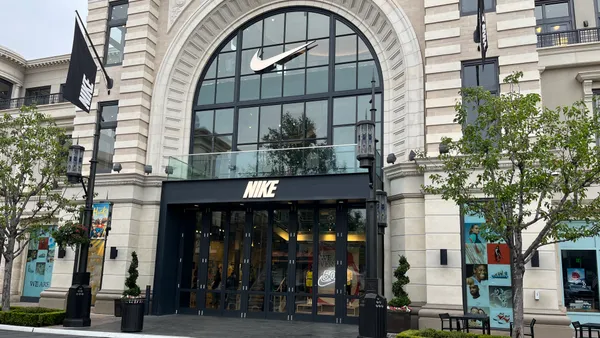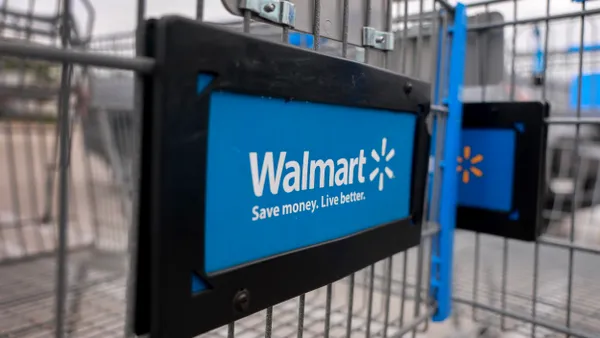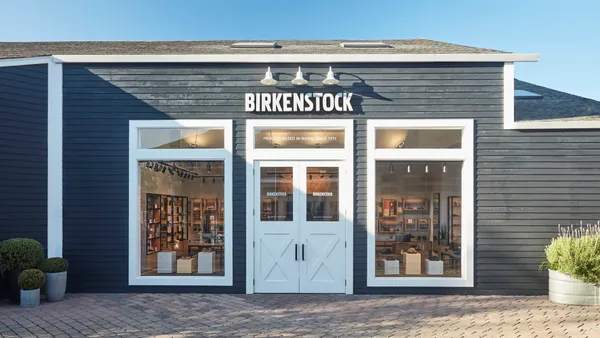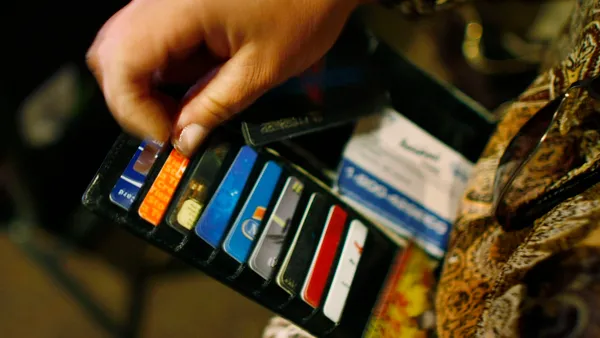Dive Brief:
-
Retail trade sales fell 0.3% in August from July, but rose 3.3% year over year, according to the latest monthly report from the U.S. Commerce Department’s Census Bureau, released Friday. E-commerce sales fell 1.1% from July and rose 8.4% year over year, according to the report.
-
August sales at department stores fell 0.1% from July and 0.8% from last year; electronics and appliance sales fell 0.7% from July and 3.5% year over year; and clothing and accessories sales fell 1% from July and rose 0.6% from last year. Meanwhile, sporting goods store sales rose 0.1% from July and fell 1.4% from last year, and furniture store sales rose 0.4% from July and 5.4% year over year.
-
The Census Bureau noted that it wasn’t able to isolate Hurricane Harvey’s impact on August retail numbers, but said the agency had received “indications from the companies that the hurricane had both positive and negative effects on their sales data, while others indicated they were not impacted at all.” Some retailers reported sales drops from hurricane-induced store closures, reduced business, damage and shipping delays, according to the report.
Dive Insight:
The report signals the biggest drop in retail sales in six months, according to Reuters, and it certainly didn't meet analyst expectations for a slight rise.
Gordon Haskett analyst Chuck Grom noted that the overall monthly retail sales decline of 0.2% (which includes non-core retail like auto sales), missed Gordon Haskett’s estimate of a 0.2% rise. That said, the focus should be on the year-over-year numbers, he said in a note emailed to Retail Dive.
“Looking at two-year stacked trends, almost every category accelerated sequentially … including … noticeable improvement in furniture, building materials, gas stations and nonstore retailing,” he said. “As we look to September, compares get more challenging … noticeably harder … for furniture, grocery, clothing and department stores.”
The August numbers reflect ongoing volatility and adjustments in retail indicative of a "still-choppy environment for the U.S. consumer," Moody's Investors Service Lead Retail Analyst Charlie O'Shea wrote in a note emailed to Retail Dive. “Consumer electronics overall continues to reflect a tepid environment, and we would particularly call out the negative impact on back-to-college sales of price deflation in key product categories like televisions and computers, with an additional ‘governor’ the potential holdback in spending due to the two cellphone launches as consumers marshal their financial resources,” O’Shea said.
Wall Street is increasingly growing weary while it focuses in on Amazon’s disruption in the space. The climate, however, is wrought not just by e-commerce but also by a correction to a couple of decades’ worth of over-expansion in some segments, most notably department stores but also, experts have told Retail Dive, in grocery.
“Retail industry earnings and sales growth has been in the dumps for the better part of the last 10 quarters despite a continued modest economic expansion and improving personal income,” Retail Metrics President Ken Perkins said in an email to Retail Dive. “Quarterly retail revenue growth has averaged just 3.2% over the past three years, down from 3.8% during the 2009-2013 period and off sharply from the robust 8.7% growth racked up from 2000-2008.”
Still, there are some rays of light lately, Perkins said. “Chains such as Michael Kors, Children’s Place, Kohl’s, J.C. Penney, Home Depot, TJX, Target, Walmart, The Gap, Ross Stores, American Eagle Outfitters, Lowe’s, Burlington Stores, Dollar Tree and Best Buy among others made note of improved business conditions, sales, traffic, or all of the above,” he said. “Moreover, retail earnings pre-announcements skewed more positively than they have been since 4Q15.”













